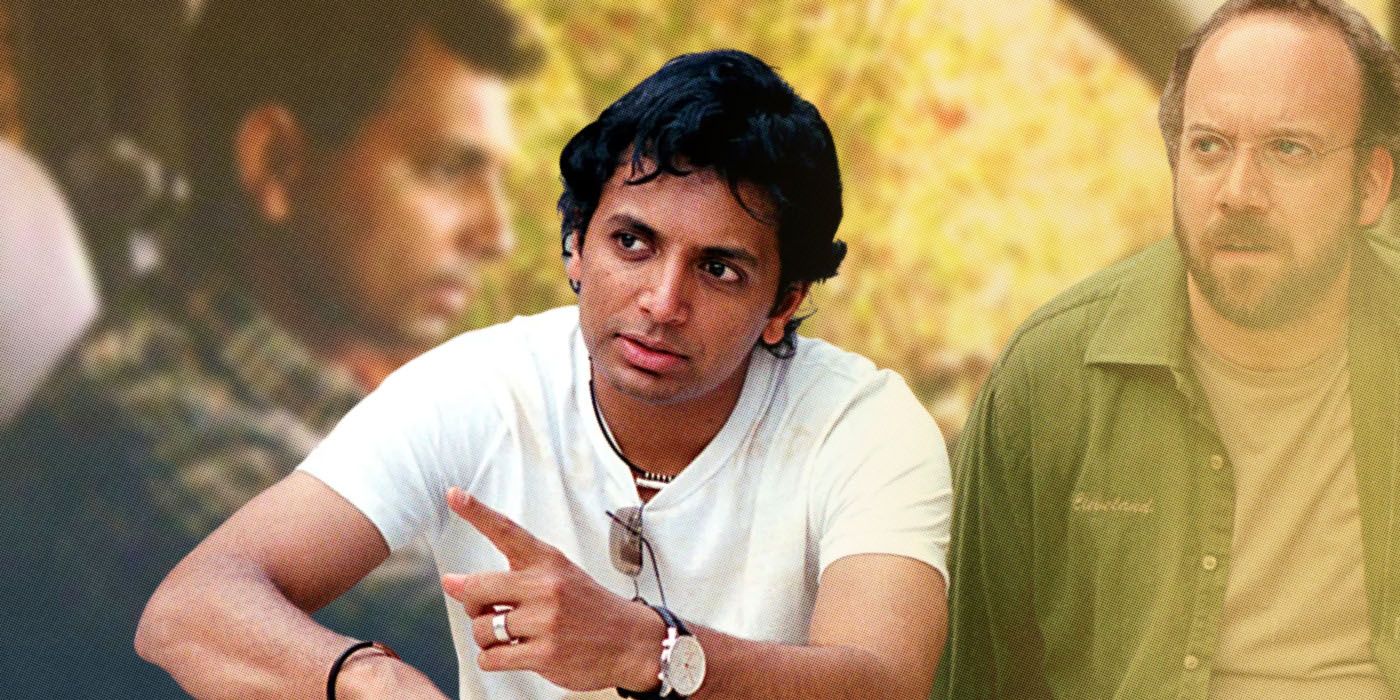Unmasking The Agatha Christie Inspiration Behind M. Night Shyamalan's "The Village"

Table of Contents
The Power of Misdirection and Red Herrings
Both Agatha Christie and M. Night Shyamalan are masters of misdirection, expertly employing red herrings to mislead the audience and build suspense. This technique is crucial in maintaining the mystery and delaying the ultimate reveal. In "The Village," the mysterious creatures inhabiting the woods serve as a potent red herring, initially captivating the audience's attention and fueling their anxieties. This mirrors Christie's approach in novels like "And Then There Were None," where seemingly insignificant details and characters ultimately contribute to the overarching narrative's shocking conclusion.
- Red herrings in "The Village": The menacing creatures in the woods, the ambiguous nature of the village's rules, and the fragmented narratives of the characters all contribute to a carefully constructed deception.
- Christie's use of red herrings: In "And Then There Were None," the seemingly random deaths initially mislead the reader, only to be revealed as part of a meticulously planned scheme. Similarly, Christie often uses seemingly innocuous characters as red herrings, concealing their true motivations and roles.
- Building suspense: The effective use of misdirection in both "The Village" and Christie's novels creates a potent sense of unease and suspense, maximizing the impact of the eventual reveal. The audience is kept guessing, continually questioning their assumptions and engaging actively with the narrative.
The Importance of Setting and Atmosphere
The isolated, claustrophobic setting of "The Village" is remarkably reminiscent of the confined environments often found in Agatha Christie's mysteries. This carefully constructed setting is integral to the film's psychological thriller elements. The isolated village, cut off from the outside world, fosters a sense of unease and vulnerability. This mirrors the enclosed spaces frequently utilized by Christie, such as the remote island in "And Then There Were None" or the snowbound manor in many of her other works.
- The isolated village: The village's physical isolation from civilization amplifies the sense of confinement and vulnerability, heightening the psychological tension. The visual representation of the woods further reinforces this feeling of being trapped and surrounded by unknown dangers.
- Similar settings in Christie's works: Christie expertly leverages isolated settings to enhance the suspense and amplify the psychological elements of her stories. The limited escape routes and the feeling of being watched contribute to a compelling sense of danger.
- Psychological tension: The setting acts as a character itself in both "The Village" and Christie's novels, contributing significantly to the overall atmosphere and impacting the audience's emotional response. The psychological weight of confinement adds another layer to the suspense.
Unreliable Narration and Hidden Truths
Both Agatha Christie and M. Night Shyamalan masterfully utilize unreliable narrators to strategically conceal crucial information from the audience, adding a layer of complexity and intrigue to their stories. In "The Village," the perspectives presented are carefully curated, gradually revealing the truth through fragmented memories and skewed interpretations. This mirrors Christie's techniques, frequently employing Poirot's keen observations to slowly uncover the truth while simultaneously manipulating the reader's perception.
- Perspectives in "The Village": The film deliberately presents the events from multiple perspectives, each offering a piece of the puzzle while simultaneously obscuring the complete picture. This gradual unveiling of information keeps the audience guessing.
- Christie's unreliable narrators: Agatha Christie often uses unreliable narrators, subtly manipulating information to mislead the reader. This adds another layer of suspense and challenges the reader to actively piece together the story.
- Withheld information: The strategic withholding of information significantly enhances audience engagement. This forces active participation in deciphering the puzzle, fostering a deeper connection with the narrative.
Thematic Parallels: Fear of the Unknown and Societal Control
A striking similarity between Agatha Christie's novels and "The Village" lies in the exploration of the fear of the unknown and the constraints of societal control. The villagers' fear of the creatures mirrors broader societal anxieties about the unknown, while the village's self-imposed rules represent a form of societal control. Christie often explores these themes subtly within her stories, examining social class dynamics and exploring societal pressures through the characters and their interactions.
- Fear in "The Village": The villagers' fear of the creatures isn't just about physical danger; it represents a deeper fear of the unknown and the potential for disruption of their established order.
- Societal control in Christie's works: Christie's novels frequently touch on themes of social hierarchy and the pressure of societal expectations. This is often manifested through the characters' relationships and the consequences of defying established norms.
- Thematic parallels: The exploration of these similar themes contributes to the overall message of both "The Village" and Christie's novels. Both explore the tension between individual freedom and societal constraints, highlighting the power of fear and control in shaping human behavior.
Deciphering the Agatha Christie Influence on "The Village"
In conclusion, the subtle yet pervasive influence of Agatha Christie's writing style and thematic elements on M. Night Shyamalan's "The Village" is undeniable. From the masterful use of misdirection and red herrings to the creation of isolated settings and the employment of unreliable narrators, Shyamalan echoes Christie's techniques, resulting in a film that shares a similar chilling suspense. The thematic parallels of fear of the unknown and societal control further strengthen this connection. By understanding the subtle yet powerful influences of Agatha Christie on M. Night Shyamalan's "The Village," we gain a deeper appreciation for the masterful craftsmanship of both. Now, it’s your turn! Re-watch "The Village" with a fresh perspective, and see how many more echoes of Agatha Christie you can uncover.

Featured Posts
-
 Mondays D Wave Quantum Qbts Stock Drop Causes And Analysis
May 20, 2025
Mondays D Wave Quantum Qbts Stock Drop Causes And Analysis
May 20, 2025 -
 Cote D Ivoire 4eme Pont D Abidjan Delais Cout Et Depenses Expliques
May 20, 2025
Cote D Ivoire 4eme Pont D Abidjan Delais Cout Et Depenses Expliques
May 20, 2025 -
 Port D Abidjan Performance Et Perspectives Du Trafic De Marchandises
May 20, 2025
Port D Abidjan Performance Et Perspectives Du Trafic De Marchandises
May 20, 2025 -
 D Wave Quantum Inc Qbts A Quantum Computing Stock Investment Analysis
May 20, 2025
D Wave Quantum Inc Qbts A Quantum Computing Stock Investment Analysis
May 20, 2025 -
 Chinas Next Giant Leap Assembling A Supercomputer In Space
May 20, 2025
Chinas Next Giant Leap Assembling A Supercomputer In Space
May 20, 2025
